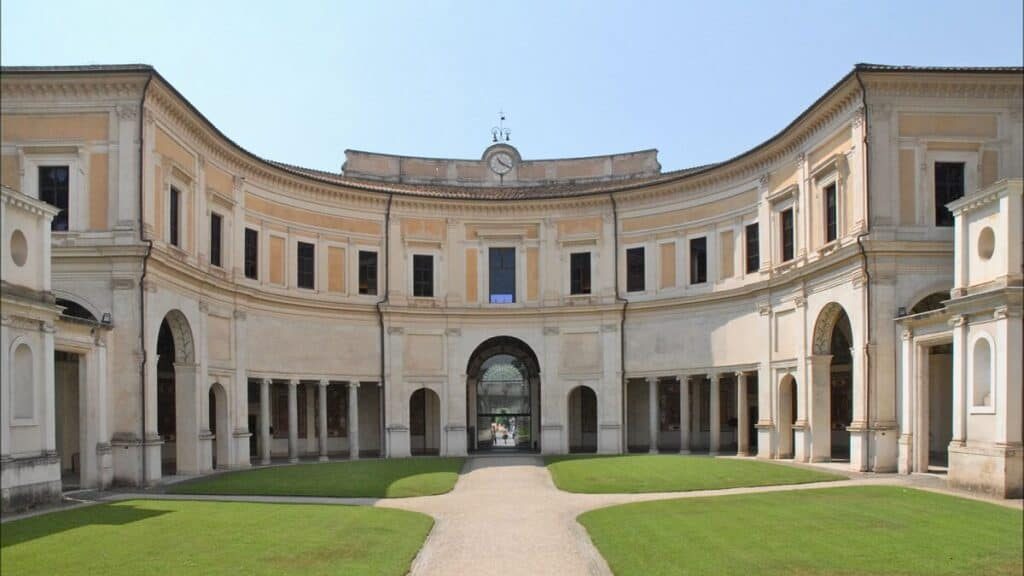Discover the history of Rome’s first inhabitants
One of the most important museums for the preservation of Etruscan history, it focuses on archaeological finds around Rome. The National Etruscan Museum is housed in Villa Giulia, a magnificent Renaissance villa, surrounded by greenery and featuring an abundance of open-air spaces.
The Etruscans can be considered the “first Romans” and are largely responsible for several characteristics that represent the Roman people today —such as the use of arches and vaults in constructions. Nowadays, the area corresponding to its former geographical location extends to Tuscany, and remnants of this civilization are found in many cities around Rome. As well as the origin of the Etruscan people, several characteristics of their society are uncertain due to the lack of texts found about this people. Due to this fact a museum dedicated to the preservation of this civilization is essential.

History of Villa Giulia
Constructed by Pope Julius III, between 1550 and 1555, Villa Giulia is a stunning villa featuring a landscaped garden with terraces connected by spectacular stairways, nymphaea and fountains. The greatest artists of the era – Jacopo Barozzi da Vignola and Bartolomeo Ammannati, with the contribution of Michelangelo Buonarroti and Giorgio Vasari – were involved in the design of the Villa, while some decorative elements were produced by other artists. The hemicycle is decorated with subtle paintings and the rooms on the first floor contain an extraordinary series of frescoes, including the representations of the Seven Hills of Rome. In 1889, the Villa became the seat of the National Etruscan Museum, after having gone through some owners.

The museum collection
The huge amount of pieces gathered in this museum provides an extremely detailed view of the evolution of the Etruscan culture, represented by the different periods of the society of this people. The first objects are mostly bronze from the time called Villanova, the first phase of the Etruscan society, in which they were the first people to have mastered iron in central Italy. During this first phase, the Villanova culture was basically agrarian, organized in small villages with huts, with advanced material culture, an economy based on cooperation, collective government and little social stratification.
In the second period of Etruscan society, called Orientalizing, the Villanova culture gave way to the Etruscan itself. Trade with other peoples is developed and is the main reason why they start having contact with other parts of the world, consequently, absorbing the differences found. A great example of this absorption can be seen in paintings that depict animals that are not common in Italy, such as leopards and elephants, evidencing contact with other distant peoples.

The Etruscans began to appreciate a lot of luxury items, such as vases of silver, bronze, glass and ivory objects, perfumes, cosmetics and others, found in many tombs of the new elite. The Etruscans already had a base in pottery, bronze, copper and iron, and from the new consumer goods they became more skillful and developed their own workshops. All these elements fill the halls of Villa Giulia, composing a typical scenario of Etruscan cities.
The following period, Archaic, is illustrated with works such a bronze candelabra with figures and jewelry items, the Apulu de Veii sculpture which is a representation of the god Apollo, and the Sarcophagus of the Spouses —an important item that represents the Etruscan culture through a reclining couple sharing a banqueting couch showing equality between men and women, unlike other peoples that existed in the same period of time. Vases and pottery with red figures (technique imported from Greece), reliefs from temples in Pirgi and important statues like the Head of Malavolta are also scattered throughout the hall illustrating the history of the Etruscan civilization.
The Classic period is represented in Villa Giulia with works such as a the head of Zeus, an unidentified goddess head found in Pirgi, ceramics from Falisco, reliefs from the sanctuary of Apollo in Falerii, the sanctuary of Celle and funerary pieces with mythological scenes. The last phase, and the decline, of Etruscan history is illustrated by items that attest to the gradual absorption of the Etruscan culture by the Roman one, showing decorated sarcophagi and ceramics that almost blend in with the authentically Roman production of the same period.
The National Etruscan Museum is a must stop to learn more about the origins of Rome and its ancestral peoples.

Villa Giulia
Piazzale di Villa Giulia, 9
Tuesday – Sunday
8.30am – 7.30pm
Entry Fee Full Price €10



